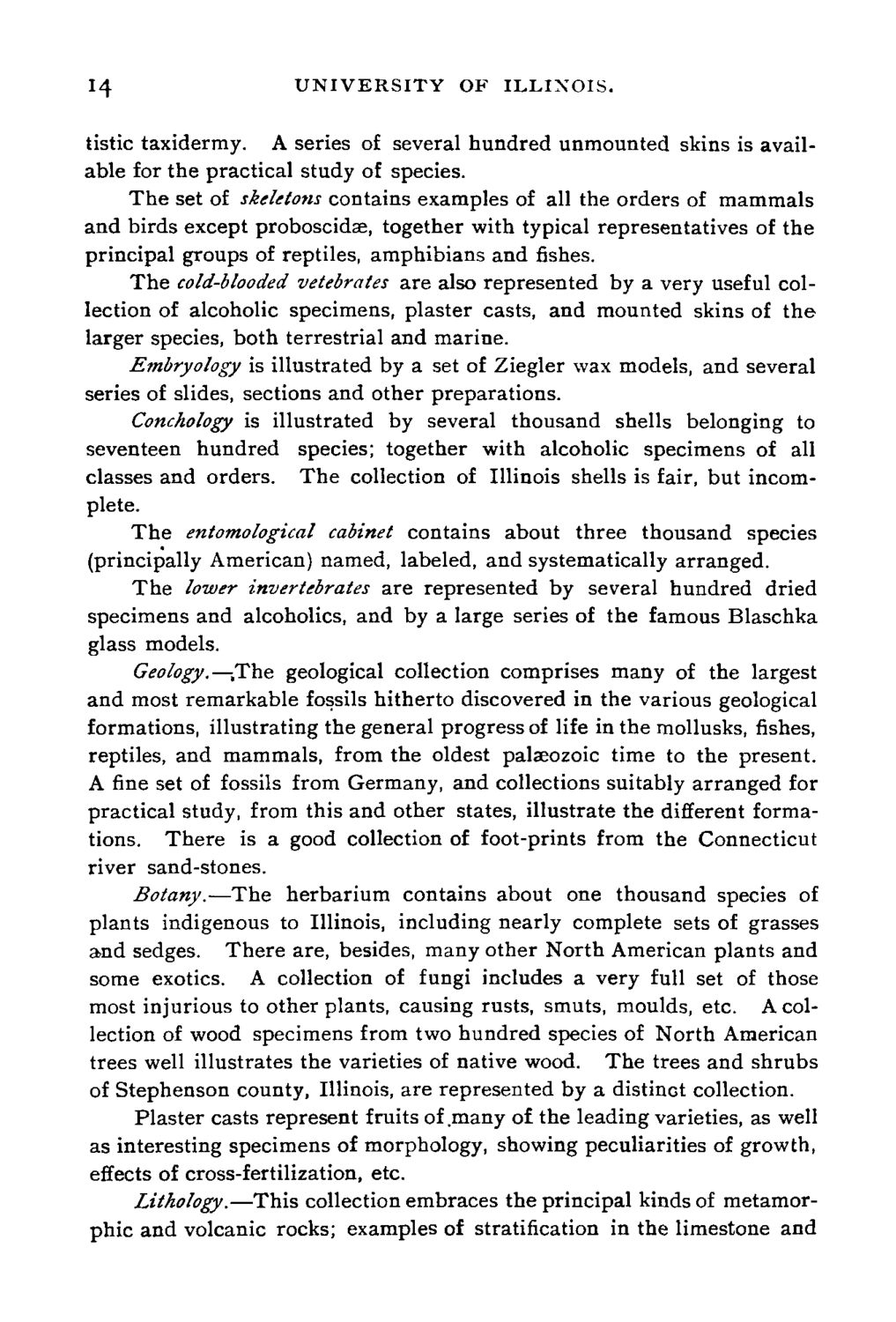| |
| |
Caption: Course Catalog - 1890-1891
This is a reduced-resolution page image for fast online browsing.

EXTRACTED TEXT FROM PAGE:
14 UNIVERSITY OF ILLINOIS. tistic taxidermy. A series o£ several hundred unmounted skins is available for the practical study of species. The set of skeletons contains examples of all the orders of mammals and birds except proboscidae, together with typical representatives of the principal groups of reptiles, amphibians and fishes. The cold-blooded vetebrates are also represented by a very useful collection of alcoholic specimens, plaster casts, and mounted skins of the larger species, both terrestrial and marine. Embryology is illustrated by a set of Ziegler wax models, and several series of slides, sections and other preparations. Conchology is illustrated by several thousand shells belonging to seventeen hundred species; together with alcoholic specimens of all classes and orders. The collection of Illinois shells is fair, but incomplete. The entomological cabinet contains about three thousand species (principally American) named, labeled, and systematically arranged. The lower invertebrates are represented by several hundred dried specimens and alcoholics, and by a large series of the famous Blaschka glass models. Geology.—-/The geological collection comprises many of the largest and most remarkable fossils hitherto discovered in the various geological formations, illustrating the general progress of life in the mollusks, fishes, reptiles, and mammals, from the oldest palaeozoic time to the present. A fine set of fossils from Germany, and collections suitably arranged for practical study, from this and other states, illustrate the different formations. There is a good collection of foot-prints from the Connecticut river sand-stones. Botany.—The herbarium contains about one thousand species of plants indigenous to Illinois, including nearly complete sets of grasses and sedges. There are, besides, many other North American plants and some exotics. A collection of fungi includes a very full set of those most injurious to other plants, causing rusts, smuts, moulds, etc. A collection of wood specimens from two hundred species of North American trees well illustrates the varieties of native wood. The trees and shrubs of Stephenson county, Illinois, are represented by a distinct collection. Plaster casts represent fruits of .many of the leading varieties, as well as interesting specimens of morphology, showing peculiarities of growth, effects of cross-fertilization, etc. Lithology.—This collection embraces the principal kinds of metamorphic and volcanic rocks; examples of stratification in the limestone and
| |